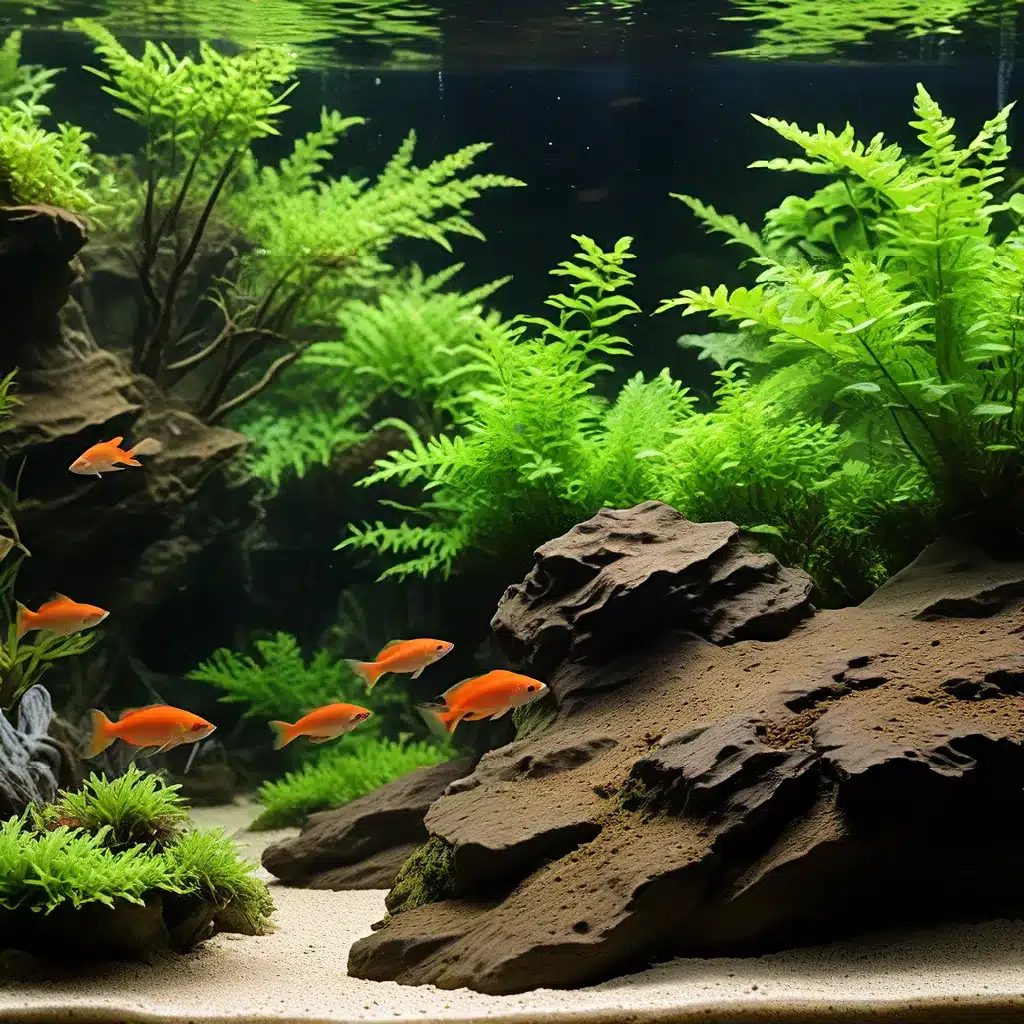
The Importance of Substrate Maintenance
Maintaining a healthy, thriving aquarium is a delicate balance of various factors, and one often overlooked aspect is the importance of regular substrate vacuuming. The aquarium substrate, whether gravel, sand, or a specialized substrate, plays a crucial role in the overall ecosystem of your tank. Over time, this substrate can accumulate a build-up of uneaten food, waste, and other organic matter, creating an environment that can be detrimental to the health and well-being of your aquatic inhabitants.
By regularly vacuuming the substrate, you can effectively remove these unwanted accumulations, improving water quality, oxygenation, and creating a more favorable environment for your fish, plants, and beneficial bacteria. This process not only helps to maintain the aesthetic appeal of your aquarium but also supports the long-term sustainability and viability of your aquatic life.
Understanding the Mechanics of Substrate Vacuuming
Substrate vacuuming, also known as “gravel cleaning” or “siphoning,” is a straightforward yet crucial maintenance task for any aquarium enthusiast. The process involves using a specialized tool, typically a gravel vacuum or siphon, to gently agitate and remove the top layer of substrate, effectively sucking up the accumulated debris and waste.
King Aquarium recommends using a quality gravel vacuum that is appropriately sized for your aquarium’s dimensions. This ensures efficient and effective cleaning without disrupting the delicate balance of your tank’s ecosystem.
When performing a substrate vacuum, it’s essential to go slowly and methodically, taking care not to uproot plants or disturb the substrate too deeply. The goal is to remove the surface-level debris without excessively disrupting the beneficial bacteria that reside within the substrate.
The Benefits of Regular Substrate Vacuuming
Incorporating regular substrate vacuuming into your aquarium maintenance routine can provide a multitude of benefits for your tank’s overall health and longevity. Let’s explore some of the key advantages:
-
Improved Water Quality: By removing accumulated waste and organic matter, substrate vacuuming helps to maintain optimal water quality, reducing the build-up of nitrates, phosphates, and other harmful compounds that can negatively impact fish and plant health.
-
Oxygenation and Nutrient Cycling: Substrate vacuuming helps to aerate the substrate, promoting the exchange of oxygen and allowing for more efficient nutrient cycling within the aquarium. This supports the growth and thriving of beneficial bacteria, as well as the overall health of your aquatic ecosystem.
-
Reduced Algae Growth: The removal of excess organic matter and nutrients can help to minimize the risk of algae blooms, which can quickly become unsightly and disrupt the balance of your aquarium.
-
Enhanced Aesthetic Appeal: A well-maintained, clean substrate can significantly improve the visual appeal of your aquarium, creating a more inviting and natural-looking environment for both you and your aquatic inhabitants to enjoy.
-
Preventative Maintenance: Consistent substrate vacuuming can help to identify and address potential issues before they become more significant problems, such as the accumulation of detrimental waste or the development of anaerobic pockets within the substrate.
Frequency and Technique for Effective Substrate Vacuuming
The frequency of substrate vacuuming can vary depending on the size of your aquarium, the number of inhabitants, and the type of substrate used. As a general guideline, most aquarium experts recommend performing a partial substrate vacuum on a weekly or bi-weekly basis. This helps to maintain a consistent level of cleanliness and prevent the build-up of harmful waste and debris.
When it comes to the actual technique, it’s essential to approach the process with care and attention to detail. Begin by gently agitating the top layer of the substrate, allowing any accumulated debris to be lifted into the water column. Then, slowly move the gravel vacuum or siphon over the surface, taking care not to disturb the deeper layers of the substrate or uproot any plants.
Remember to always perform a partial water change after substrate vacuuming to replenish any water lost during the process and ensure that the aquarium’s water parameters remain balanced.
Advanced Substrate Vacuuming Techniques
While the basic substrate vacuuming process is relatively straightforward, there are some advanced techniques that can further optimize the effectiveness and efficiency of this maintenance task.
Targeted Vacuuming
For aquariums with specific problem areas, such as heavily planted regions or areas with a higher concentration of waste accumulation, consider using a more targeted approach to your substrate vacuuming. This may involve focusing on specific sections of the tank or using a smaller, more precise gravel vacuum attachment to address these problem areas.
Layered Substrate Maintenance
In aquariums with a layered substrate, such as a soil or nutrient-rich base overlaid with a decorative gravel or sand, the vacuuming process may need to be adapted. In these cases, it’s essential to be gentle and mindful of the substrate composition, ensuring that the beneficial layers are not disrupted or removed during the cleaning process.
Aquascaping Considerations
For aquarium enthusiasts who have invested significant time and effort into creating intricate aquascapes, substrate vacuuming can be a delicate balancing act. Here, it’s crucial to navigate the substrate with care, avoiding disruption to the carefully planned layout and design elements.
Conclusion: Unlocking the Full Potential of Your Aquarium
Maintaining a healthy and thriving aquarium requires a multifaceted approach, and substrate vacuuming is a crucial component of this comprehensive care routine. By regularly removing accumulated waste and debris from the substrate, you can unlock the full potential of your aquatic ecosystem, supporting the growth and well-being of your fish, plants, and beneficial bacteria.
Whether you’re a seasoned aquarium enthusiast or just starting your journey, incorporating a consistent substrate vacuuming regimen into your maintenance schedule can make a significant difference in the long-term success and enjoyment of your aquarium. By prioritizing this essential task, you’ll be well on your way to creating a vibrant, captivating underwater oasis that you and your aquatic companions can thrive in for years to come.

